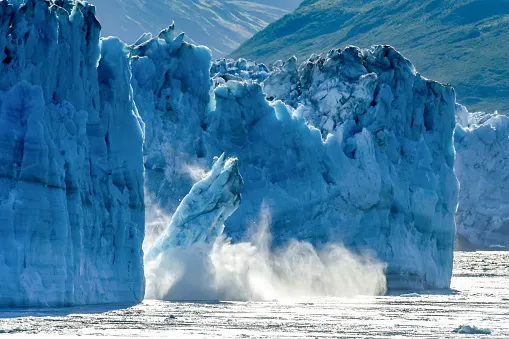
Massive Alaska tsunami will likely strike within 20 years, experts warn
The scientists say a landslide-generated tsunami could occur within the next year and likely that it will occur within 20 years.
Barry Glacier is roughly 100 km east of Anchorage, Alaska and is a destination that attracts tourists from around the world. The glacier has been slowly retreating as global temperatures rise and scientists are warning that a catastrophic disaster is bound to occur within the next two decades.
An international group of scientists from Canada, Germany and the U.S. have researched the danger of the glacier’s unstable mountain slope and the risk it poses to nearby regions. As the glacier melts it becomes more unstable and a trigger, such as a heavy rain or unusually warm summer, could send millions of tons of ice crashing into the Harriman Fiord and cause a massive tsunami.
The scientists say that if the slope collapsed into Harriman Fiord it could cause a tsunami over 30 metres tall, and still be at an alarming height of 10 metres upon reaching Prince William Sound, an area that is home to nearly 300,000 people.

The researchers’ analysis shows the landslide mass has moved 185 m down the slope between 2009 and 2015 and preliminary findings suggest that the slope is still moving at a slower rate. If the entire mass were to fail at once, the town of Whittier could also face a 10 metre wall of water within 20 minutes. Given the frequency of tourists, fishing vessels and hunters in the areas, there is the potential that hundreds of people could be in the risk zone if a tsunami were to occur.
Tsunamis can travel at 800 km/h in the deep ocean and experts say that it is physically impossible to outrun one. Near the shore tsunamis begin to slow down to 16-32 km/h and gain height, which means that the only way to survive a tsunami is by immediately seeking high ground.
Based on the scientists’ calculations, they say that it is possible that a landslide-generated tsunami could occur within the next year and likely that it will occur within 20 years. Severe landslide-generated tsunamis have happened in the Arctic before, which could indicate a concerning trend that is becoming more apparent as global temperatures climb.
A landslide that was slowly moving suddenly failed in October 2015 in Icy Bay, Alaska and created a tsunami with a height of 193 metres. A tsunami that was created after a landslide in west Greenland in June 2017 destroyed a large portion of the town of Nuugaatsiaq that was 32 km away. Villagers that survived have not returned because of the concern that a receding nearby slope could fail.
The unstable slope on the Barry Glacier is much larger than the slopes that failed in both of these previous instances and the researchers say that this means it could produce a much larger tsunami.
The researchers are working with the Alaska Department of Natural Resources, Division of Geological and Geophysical Survey (DGGS) and local communities to reduce the danger in the risk zones. They state that further research is needed to implement hazard monitoring and identifying the specific places most at risk include expanding field and satellite data as well as using GPS and seismic measurements over time to monitor how the slope responds to potential triggers like rainstorms and earthquakes.

